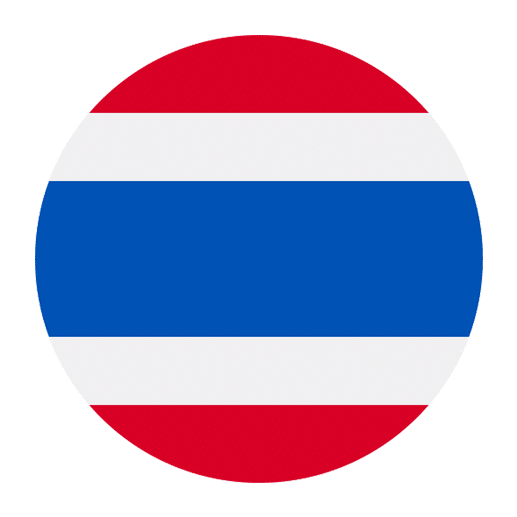Cultural references in films can provide a window into the soul of a nation, offering insights that transcend mere language. Thai films, in particular, are rich with cultural nuances that can deepen one’s understanding of both the Thai language and Thai society. In this article, we’ll explore the cultural references found in Thai language films and how they can serve as a valuable resource for language learners.
The Essence of Thai Culture in Film
Thai films often weave elements of Thai culture into their narratives, providing an authentic context for the language. From traditional practices and social hierarchies to contemporary issues and pop culture, these films offer a diverse array of cultural references that can enrich your language learning journey.
Traditional Practices and Beliefs
Thailand is a country steeped in traditions and beliefs that permeate everyday life. Many Thai films incorporate these elements, offering a glimpse into rituals, customs, and the spiritual life of Thais.
Buddhism and Spirituality: Buddhism is the predominant religion in Thailand, and its influence is evident in many Thai films. Movies like “Nang Nak” and “Ong Bak” showcase Buddhist rituals, temple scenes, and the moral teachings that guide Thai society. Understanding these references can provide valuable context for language learners, as Buddhist concepts often appear in everyday conversation and idiomatic expressions.
Festivals and Ceremonies: Thai festivals and ceremonies are vibrant and culturally significant. Films like “Songkran” and “Loy Krathong” highlight these important events, showcasing traditional clothing, music, and dance. By watching these films, language learners can familiarize themselves with the vocabulary and phrases associated with these celebrations, such as “สวัสดีปีใหม่” (sawasdee pi mai – Happy New Year) during Songkran.
Social Hierarchies and Etiquette
Understanding social hierarchies and etiquette is crucial for mastering the Thai language, as these aspects influence how people interact and communicate.
Respect for Elders: Thai society places a strong emphasis on respect for elders, which is reflected in language use. Films like “Hello Stranger” and “The Teacher’s Diary” depict the importance of using polite language and gestures when addressing older individuals. Terms like “คุณ” (khun – Mr./Ms.) and “พี่” (phi – older sibling) are commonly used to show respect.
Wai Greeting: The traditional Thai greeting, known as the “wai,” is a gesture of respect that involves pressing the palms together and bowing slightly. This gesture is often depicted in Thai films, such as “The Love of Siam” and “One Day.” Language learners can observe when and how the wai is used, as well as the accompanying phrases like “สวัสดี” (sawasdee – hello) and “ขอบคุณ” (khop khun – thank you).
Contemporary Issues and Pop Culture
Thai films also tackle contemporary issues and reflect the country’s evolving pop culture. These references can provide language learners with a more current and relatable understanding of Thai society.
Urbanization and Modern Life
Thailand’s rapid urbanization and modernization have brought about significant social changes, which are often explored in Thai cinema.
City Life: Films like “Bangkok Traffic Love Story” and “Bad Genius” capture the hustle and bustle of city life in Bangkok. These films showcase the daily challenges and experiences of urban Thais, including navigating the city’s public transportation system and balancing work and personal life. Language learners can pick up colloquial expressions and slang commonly used in urban settings.
Education System: The Thai education system is a recurring theme in many films, such as “Hormones” and “A Little Thing Called Love.” These movies provide insights into the pressures faced by Thai students, from academic competition to social dynamics in school. Key phrases and vocabulary related to education, such as “ครู” (kru – teacher) and “การบ้าน” (kan baan – homework), are frequently used.
Thai Pop Culture
Thai pop culture, including music, fashion, and social media trends, is a significant aspect of contemporary Thai society. Films often reflect these trends, offering language learners a way to stay current with modern Thai expressions and lifestyle.
Music and Entertainment: Thai films like “SuckSeed” and “Hormones” feature popular Thai music and showcase the country’s vibrant entertainment scene. By watching these films, language learners can become familiar with famous Thai songs, artists, and music-related vocabulary, such as “เพลง” (phleng – song) and “นักร้อง” (nak rong – singer).
Fashion and Trends: Fashion plays a prominent role in films like “Pee Mak” and “May Who?” which depict the latest trends and styles favored by Thai youth. Observing the clothing and accessories worn by characters can help language learners understand contemporary Thai fashion vocabulary, such as “เสื้อผ้า” (suea phaa – clothes) and “รองเท้า” (rong thao – shoes).
Cultural Idioms and Expressions
Idioms and expressions are a key component of any language, and Thai is no exception. Thai films often use idiomatic language that reflects cultural values and beliefs.
Proverbs and Sayings
Thai proverbs and sayings are frequently used in films to convey wisdom or humor. Understanding these expressions can provide deeper insights into Thai culture and thought processes.
Examples of Thai Proverbs: Phrases like “น้ำขึ้นให้รีบตัก” (nam khuen hai rip tak – strike while the iron is hot) and “อยู่บ้านท่านอย่านิ่งดูดาย ปั้นวัวปั้นควายให้ลูกท่านเล่น” (yu ban than ya ning du dai pan wua pan khwai hai luk than len – when in someone else’s home, don’t just sit idly; help out as if it’s your own home) are commonly heard in Thai films. Recognizing these proverbs can help language learners understand the cultural context and enhance their comprehension skills.
Colloquial Expressions
Colloquial expressions and slang are often used in Thai films to create authentic dialogue and depict characters’ personalities.
Examples of Colloquial Expressions: Phrases like “เจ๋ง” (jeng – cool) and “เวอร์” (wer – exaggerated) are frequently used in modern Thai films. By paying attention to these expressions, language learners can expand their conversational skills and sound more natural when speaking Thai.
Regional Dialects and Accents
Thailand is a diverse country with various regional dialects and accents. Thai films often incorporate these linguistic variations, providing language learners with exposure to different ways of speaking Thai.
Isan Dialect
The Isan region in northeastern Thailand has its own distinct dialect, which is often featured in films set in this area.
Examples of Isan Dialect: Films like “Mon Rak Transistor” and “The Rocket” showcase the Isan dialect, with phrases like “บ่” (bo – no) and “ซำบายดีบ่” (sambai dee bo – how are you?). Understanding these regional differences can help language learners appreciate the linguistic diversity of Thailand.
Southern and Northern Accents
Southern and northern Thai accents also appear in films set in these regions, offering additional exposure to the country’s linguistic variety.
Examples of Accents: Movies like “Amazing Thailand” and “Sabaidee Luang Prabang” feature characters with southern and northern accents. By listening to these accents, language learners can improve their listening skills and gain a more comprehensive understanding of Thai pronunciation.
Conclusion
Thai language films are a treasure trove of cultural references that can significantly enhance your language learning experience. By immersing yourself in these films, you can gain a deeper understanding of Thai traditions, social norms, contemporary issues, and linguistic nuances. Whether you’re a beginner or an advanced learner, exploring the cultural richness of Thai cinema can make your language learning journey more engaging and rewarding. So, grab some popcorn, find a Thai film that piques your interest, and start learning!

